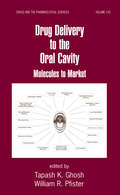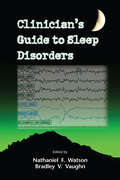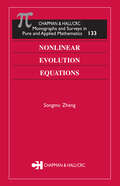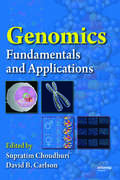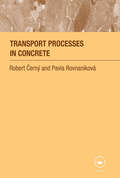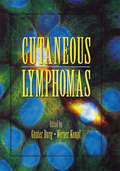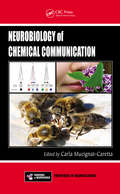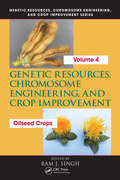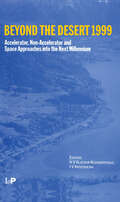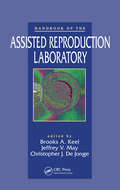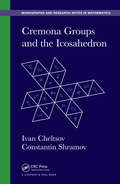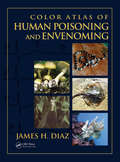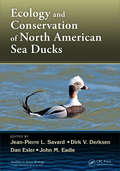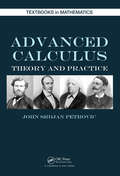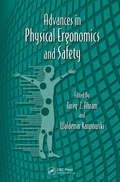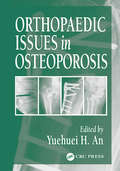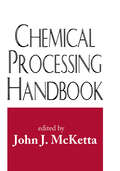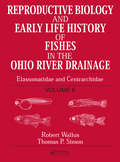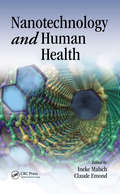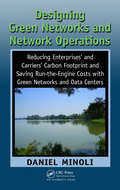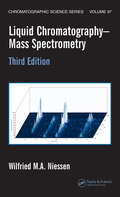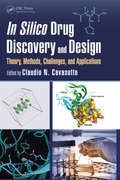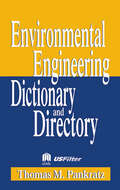- Table View
- List View
Drug Delivery to the Oral Cavity: Molecules to Market (Drugs and the Pharmaceutical Sciences)
by Tapash K. Ghosh William R. PfisterWith contributions from recognized authorities in industry, academia, and government, this reference presents the state-of-the-art in the testing, formulation, and clinical evaluation of intraoral drug delivery products-summarizing intraoral dosage forms in various stages of research, as well as products currently on the market.
Clinician's Guide to Sleep Disorders (Neurological Disease and Therapy)
by Paul C. H. LiA reader friendly and quick reference guide for the identification, diagnosis, and treatment of sleep disorders, this resource covers the entire range of sleep medicine addressing only the most clinically relevant information for sleep disorders management. Each chapter presents a thoughtful course of action for diagnosis and treatment - detailing
Toxicology of Skin
by Howard I. MaibachToxic injury to the skin in the general population, and particularly in western populations, is on the increase. This is partly due to the expanding number of natural and man-made chemicals present in our everyday environment. The need for a thorough understanding of the skin, and the mechanisms of toxicity therein, has never been more pressing. Th
Nonlinear Evolution Equations
by Songmu ZhengNonlinear evolution equations arise in many fields of sciences including physics, mechanics, and material science. This book introduces some important methods for dealing with these equations and explains clearly and concisely a wide range of relevant theories and techniques. These include the semigroup method, the compactness and monotone operator
Genomics: Fundamentals and Applications
by Supratim Choudhuri David B. CarlsonThis unique new text delivers a solid foundation for understanding the role of genomics in human health and in advances that promise to help improve the quality of human life. Unlike other works that focus mainly on toxicogenomic techniques, Genomics presents a thorough overview of the field in four major sections: 1) fundamentals of genes and geno
Transport Processes in Concrete
by Robert Cerny Pavla RovnanikovaTransport Processes in Concrete presents a comprehensive survey of the physical and chemical processes and transport mechanisms in concrete, and analyses their significance for the movement of heat, moisture and chemical compounds.A critical analysis of the available mathematical models is given, and from this analysis the most suitable models to d
Cutaneous Lymphomas (Basic and Clinical Dermatology)
by Paul C. H. LiBased on extensive clinical, histological, and experimental studies, this guide serves as an authoritative source of information on the epidemiology, etiology, pathogenesis, diagnosis, and treatment of cutaneous lymphomas-reflecting the state-of-the-art in the field of cutaneous lymphomas-presented in the context of the brand-new WHO/EORTC-consensu
Neurobiology of Chemical Communication (Frontiers in Neuroscience)
by Carla Mucignat-CarettaIntraspecific communication involves the activation of chemoreceptors and subsequent activation of different central areas that coordinate the responses of the entire organism-ranging from behavioral modification to modulation of hormones release. Animals emit intraspecific chemical signals, often referred to as pheromones, to advertise their prese
Genetic Resources, Chromosome Engineering, and Crop Improvement: Oilseed Crops, Volume 4 (Genetic Resources Chromosome Engineering & Crop Improvement)
by Paul C. H. LiSummarizing landmark research, Volume 4 of this essential seriesfurnishes information on the availability of germplasm resources that breeders can exploit for producing high-yielding oilseed crop varieties. Written by leading international experts, this volume presents the most up-to-date information on employing genetic resources to increas
Seismic Design of Steel Structures
by Federico Mazzolani Victor GioncuProviding real world applications for different structural types and seismic characteristics, Seismic Design of Steel Structures combines knowledge of seismic behavior of steel structures with the principles of earthquake engineering. This book focuses on seismic design, and concentrates specifically on seismic-resistant steel structures. Drawing o
Beyond the Desert 99: Accelerator, Non-accelerator and Space Approaches into the Next Millennium, Second International Conference on Particle Physics Beyond the Standard Model, Castle Ringberg, Germany, 6-12 June 1999
by H V Klapdor-Kleingrothaus I V KrivosheinaAddressing the need for an up-to-date reference on silicon devices and heterostructures, Beyond the Desert 99 reviews the technology used to grow and characterize Goup IV alloy films. It covers the theory, device design, and simulation of heterojunction transistors, emphasizing their relevance in developing the technologies involving strained layer
Handbook of the Assisted Reproduction Laboratory
by Paul C. H. LiWith the advent of Assisted Reproductive Technologies, our understanding of the reproductive system in both men and women has progressed in an exponential manner.Along with this increase in knowledge has emerged new and advanced laboratories performing unique techniques aimed at diagnosing and treating infertility problems. And as these lab
Cremona Groups and the Icosahedron (Chapman & Hall/CRC Monographs and Research Notes in Mathematics)
by Ivan Cheltsov Constantin ShramovCremona Groups and the Icosahedron focuses on the Cremona groups of ranks 2 and 3 and describes the beautiful appearances of the icosahedral group A5 in them. The book surveys known facts about surfaces with an action of A5, explores A5-equivariant geometry of the quintic del Pezzo threefold V5, and gives a proof of its A5-birational rigidity.The a
Color Atlas of Human Poisoning and Envenoming
by Diaz JamesThe Color Atlas of Human Poisoning and Envenoming is the only full-color resource available for the immediate visual association and the rapid identification of envenoming species, resultant lesions, clinical outcomes of envenoming or poisoning, and recommended treatment strategies to limit toxic exposures and injuries. With no-nonsense, bulleted t
Ecology and Conservation of North American Sea Ducks (Studies in Avian Biology)
by Dirk V. Derksen Dan Esler John M. Eadie Jean-Pierre L. SavardThe past decade has seen a huge increase in the interest and attention directed toward sea ducks, the Mergini tribe. This has been inspired, in large part, by the conservation concerns associated with numerical declines in several sea duck species and populations, as well as a growing appreciation for their interesting ecological attributes. Reflec
Advanced Calculus: Theory and Practice (Textbooks in Mathematics)
by John PetrovicSuitable for a one- or two-semester course, Advanced Calculus: Theory and Practice expands on the material covered in elementary calculus and presents this material in a rigorous manner. The text improves students' problem-solving and proof-writing skills, familiarizes them with the historical development of calculus concepts, and helps them unders
Advances in Physical Ergonomics and Safety (Advances in Human Factors and Ergonomics Series)
by Waldemar Karwowski Tareq Z. AhramBased on recent research, this book discusses physical ergonomics, which is concerned with human anatomical, anthropometric, physiological and biomechanical characteristics as they relate to physical activity. Topics include working postures, materials handling, repetitive movements, work-related musculoskeletal disorders, workplace layout, safety,
Orthopaedic Issues in Osteoporosis
by Yuehuei H. AnOrthopaedic procedures in elderly patients are challenging and costly. As the population ages these costs will continue to escalate. ORTHOPAEDIC ISSUES IN OSTEOPOROSIS weaves together theory and applications to provide the first reference available on the orthopaedic aspects of osteoporosis. The focus on the management of patients who have
Chemical Processing Handbook
by John J. McKettaWritten by more than 40 world renowned authorities in the field, this reference presents information on plant design, significant chemical reactions, and processing operations in industrial use - offering shortcut calculation methods wherever possible.
Reproductive Biology and Early Life History of Fishes in the Ohio River Drainage: Elassomatidae and Centrarchidae, Volume 6
by Thomas P. Simon Robert WallusThis seven-volume series is the most extensive treatise on early life histories of the freshwater fishes of North America. It represents the state-of-the-art in fishery biology and provides a systematic approach to the study of early life histories of all the fishes in this region. Each volume contains distinguishing characteristics and a pictorial
Nanotechnology and Human Health
by Paul C. H. LiAddressing medium- and long-term expectations for human health, this book reviews current scientific and technical developments in nanotechnology for biomedical, agrofood, and environmental applications. This collection of perspectives on the ethical, legal, and societal implications of bionanotechnology provides unique insight into contemporary te
Designing Green Networks and Network Operations: Saving Run-the-Engine Costs
by Daniel MinoliIn recent years, socio-political trends toward environmental responsibility and the pressing need to reduce Run-the-Engine (RTE) costs have resulted in the concept of Green IT. Although a significant amount of energy is used to operate routing, switching, and transmission equipment, comparatively less attention has been paid to Green Networking. A
Liquid Chromatography-Mass Spectrometry (Chromatographic Science Series)
by Wilfried M.A. NiessenA constructive evaluation of the most significant developments in liquid chromatography-mass spectrometry (LC-MS) and its uses for quantitative bioanalysis and characterization for a diverse range of disciplines, Liquid Chromatography-Mass Spectrometry, Third Edition offers a well-rounded coverage of the latest technological developments and
In Silico Drug Discovery and Design: Theory, Methods, Challenges, and Applications
by Claudio N. CavasottoIn Silico Drug Discovery and Design: Theory, Methods, Challenges, and Applications provides a comprehensive, unified, and in-depth overview of the current methodological strategies in computer-aided drug discovery and design. Its main aims are to introduce the theoretical framework and algorithms, discuss the range of validity, strengths and limita
Special Edition - Environmental Engineering Dictionary and Directory
by Thomas M. PankratzLike most technical disciplines, environmental science and engineering is becoming increasingly specialized. As industry professionals focus on specific environmental subjects they become less familiar with environmental problems and solutions outside their area of expertise. This situation is compounded by the fact that many environmental science
